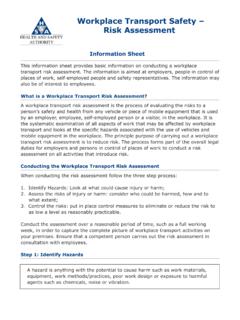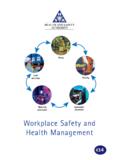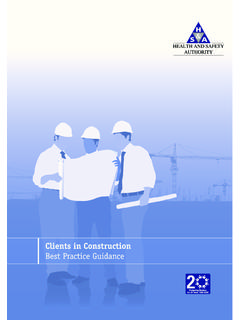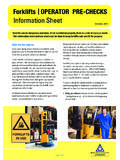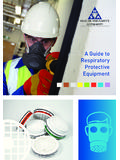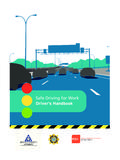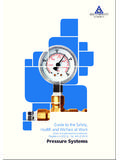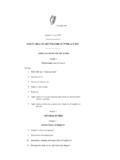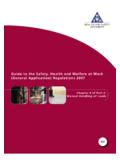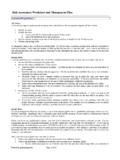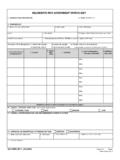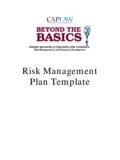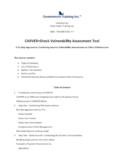Transcription of Guide on Manual Handling Risk Assessment in the ...
1 Guide on Manual Handling Risk Assessment in the Manufacturing Sector Our vision: A country where worker safety, health and welfare and the safe management of chemicals are central to successful enterprise Contents INTRODUCTION ..2. THE BUSINESS CASE FOR MANAGING Manual Handling IN THE MANUFACTURING SECTOR ..3. WHY IS THERE A NEED TO MANAGE THE HAZARD OF Manual Handling IN THE WORKPLACE? ..5. THE Manual Handling RISK Assessment PROCESS ..8. Manual Handling RISK Assessment CASE STUDIES ..10. APPENDIX 1: Manual Handling RISK Assessment WORKSHEET ..15. APPENDIX 2: EXAMPLES OF RISK FACTORS FOR Manual Handling OF LOADS ..17. APPENDIX 3: EXAMPLE OF A SAFE SYSTEM OF WORK PLAN (SSWP) ..18. Published in 2013 by the Health and Safety Authority, The Metropolitan Building, James Joyce Street, Dublin 1. Guide on Manual Handling Risk Assessment in the Manufacturing Sector INTRODUCTION. This Guide gives direction and practical information to those that work in the manufacturing sector on action that can be taken to manage the potential hazard of Manual Handling in the workplace.
2 This is necessary in order to work towards preventing musculoskeletal injuries at work and reducing exposure to high financial costs including compensation claims. The objectives of providing such information are: To raise awareness of the business case for managing the hazard of Manual Handling To explain why the hazard of Manual Handling needs to be managed in the workplace To help employers understand and recognise what the potential risk factors are in relation to Manual Handling in their workplace To give direction on Manual Handling risk Assessment and how it can be used to highlight potential hazards and create opportunities for developing better ways of working including use of Handling aids, improved housekeeping or better organisation of work processes resulting in reduced Handling of stock and reduced risk of musculoskeletal injury To explain how to complete a Manual Handling risk Assessment process through illustrated case studies To give direction on developing a safe system of work plan The manufacturing sector covers a wide range of different business types including metalwork, woodworking, food processing, electronics, plastics and medical device production.
3 The tasks conducted in the manufacturing sector require people to engage in different types of activity which sometimes may require Manual Handling . Not all Manual Handling is hazardous; however, in some cases the activity will require a person to engage in a work practice which may involve a significant amount of Handling , including lifting heavy loads or lifting loads above shoulder height. It is important to be aware that Manual Handling can be a potential workplace hazard which can result in a person suffering a musculoskeletal injury such as a back injury and therefore needs to be managed effectively. Page 2. Guide on Manual Handling Risk Assessment in the Manufacturing Sector THE BUSINESS CASE FOR MANAGING Manual Handling IN THE MANUFACTURING SECTOR. Injuries due to Manual Handling account for 33% of all accidents reported to the Health and Safety Authority each year, and nearly 20% of these Manual Handling accidents take place in the manufacturing sector. A review of figures in the Health and Safety Authority 2011 Annual Statistics show that 49% of the Manual Handling injuries in the manufacturing sector occurred when the person was lifting or carrying a load.
4 Figures from the Personal Injuries Assessment Board (PIAB) show that in 2008 million was awarded in respect of 972 employer liability awards. Just over one in five ( ) of these awards were to people working in the manufacturing sector. Further analysis of the data shows that sprains ( ) are the most common injury resulting in a claim. The average employer liability award for 2008 was 32,266. Musculoskeletal injuries at work are a massive drain on the resources of an employer, including costs such as sick pay, lost productivity, retraining, legal fees and injury benefit. They represent a significant opportunity for cost reduction, since they are manageable and preventable. A study of civil court judgements on cases concerning injury due to Manual Handling identified the following key systems failures when making rulings on compensation claims: (Health and Safety Review, 2000). No risk Assessment of work activities Lack of safe system of work plans Mechanical aids were not provided and maintained Adequate training was not provided No evidence of work supervision The case study below demonstrates how tangible improvements are possible if action is taken to address systems failures such as those outlined above.
5 The interventions were introduced at a medium-sized Irish manufacturing company. Page 3. Guide on Manual Handling Risk Assessment in the Manufacturing Sector Problem identification The production process required a significant level of Manual Handling . A number of risk factors resulted including: - Repetitive bending during a packing operation - Large, awkward and heavy parts carried over long distances As a result there were a high level of reportable injuries due to unsafe Manual Handling practice, and insurance costs running at 60,000 per year. management interventions management agreed to implement a risk reduction strategy which included: - Managers being trained to conduct risk assessments - The completion of a Manual Handling risk Assessment of operations - Changes being made to work practices to reduce the Manual Handling risk factors. These improvements included the introduction of variable height pallet trucks and hydraulic trollies, the transporting of large parts on wheels, training of staff and new housekeeping procedures Results - No reportable injuries - Insurance costs reduced to 18,000 per year Page 4.
6 Guide on Manual Handling Risk Assessment in the Manufacturing Sector WHY IS THERE IS A NEED TO MANAGE THE HAZARD OF Manual . Handling IN THE WORKPLACE? A work activity that requires repetitive bending and the lifting of heavy loads could result in compression of the disc, facet joint or ligament damage. Twisting and bending together is perhaps the greatest stress on the spine, especially the disc. It is for reasons such as these that there is a regulation with provisions governing the management of the hazard of Manual Handling in the workplace in order to avoid or reduce the risk of injury, particularly back injury. The Safety, Health and Welfare at Work (General Application) Regulations 2007 (SI No. 299 of 2007), Chapter 4 of Part 2, outline the requirements that employers must adhere to in relation to Manual Handling . In the first instance Manual Handling is defined in Regulation 68 of the Safety, Health and Welfare at Work (General Application) Regulations 2007: Manual Handling involves any transporting or supporting of a load by one or more employees, and includes lifting, putting down, pushing, pulling, carrying or moving a load, which by reason of its characteristics or unfavourable ergonomic conditions, involves risk, particularly of back injury, to employees.
7 The regulation applies only to those Manual Handling operations which involve risk of injury to employees. The definition of Manual Handling clarifies that not all Manual Handling involves a risk of injury, only Handling with particular load characteristics ( loads that are too heavy or too large) or unfavourable ergonomic conditions ( twisting movement of the trunk). The regulation refers to a schedule of risk factors (see the Appendices for examples of these risk factors) which take account of these load characteristics or unfavourable ergonomic conditions. This schedule is an important reference point when carrying out task-specific Manual Handling risk assessments. It is important to have an understanding of the range of work activities that take place in the workplace. As a first step, a walk-through of the workplace should be carried out and staff consulted to identify work activities of which Manual Handling forms a significant part. Most manufacturing sites have three key stages in their production process: Goods inwards Production/assembly Good outwards/packing Page 5.
8 Guide on Manual Handling Risk Assessment in the Manufacturing Sector It is useful, through consultation with staff, to get an understanding of the potential risk factors as they relate to specific tasks. Manual Handling tasks that will need to be risk assessed will include one or all of the following risk factors: Risk factor (unfavourable ergonomic condition) Picture The lifting of the load requires repeated manipulation of the load at a distance from the trunk The lifting of the load requires repeated bending of the trunk The load is very large and difficult to grasp The Handling repeatedly takes place at floor level or above shoulder height The physical effort can only be achieved by a twisting of the trunk The load is carried over a long distance and there is poor housekeeping with unsafe access Note: This is not an exhaustive list of risk factors for Manual Handling of loads Page 6. Guide on Manual Handling Risk Assessment in the Manufacturing Sector The basic principle of the regulation is that where Manual Handling activities in the workplace may involve a risk of injury (particularly to the back) due to exposure to unfavourable ergonomic conditions, the employer must take measures to avoid or reduce the risk of injury.
9 In other words, the employer needs to manage the hazard of Manual Handling through implementation of a Manual Handling risk Assessment process and implementation of preventative measures based on the outcomes of the risk assessments. This may include the implementation of safe system of work plans for site-specific tasks, providing information on the use of mechanical aids, the reorganisation of a work activity to allow loads to be handled at a safe height or the provision of instruction to workers on how to use Handling aids or handle loads safely. The Manual Handling risk Assessment process is explained in the next section of this Guide . Page 7. Guide on Manual Handling Risk Assessment in the Manufacturing Sector THE Manual Handling RISK Assessment PROCESS. There are different tools for assessing Manual Handling tasks, including the NIOSH lifting equation and the Mac Tool. Below is a brief summary of a five-step risk Assessment process which can be used to assess individual Manual Handling tasks.
10 Examples of completed Manual Handling risk assessments are detailed in the next section of this Guide . Step 1 Task description In consultation with staff, collect information on how the task is carried out. Identify the key stages of the task and summarise all information col- lected. Step 2 Collect technical The type of information to collect will include information on the weight information of the load, physical measurements of the load, postures observed during the Handling activity, the amount of space available, housekeeping, the duration of the task, the number of Handling activities and the employee's knowledge of a task. Step 3 Identify the risk Examples of risk factors include: factors Load is too heavy Employee is prevented from Handling a load at a safe height Handling is made with the body in an unstable posture Each risk factor identified must be supported by evidence. A list of risk factors or unfavourable ergonomic conditions and load characteristics is detailed in the Appendices.
